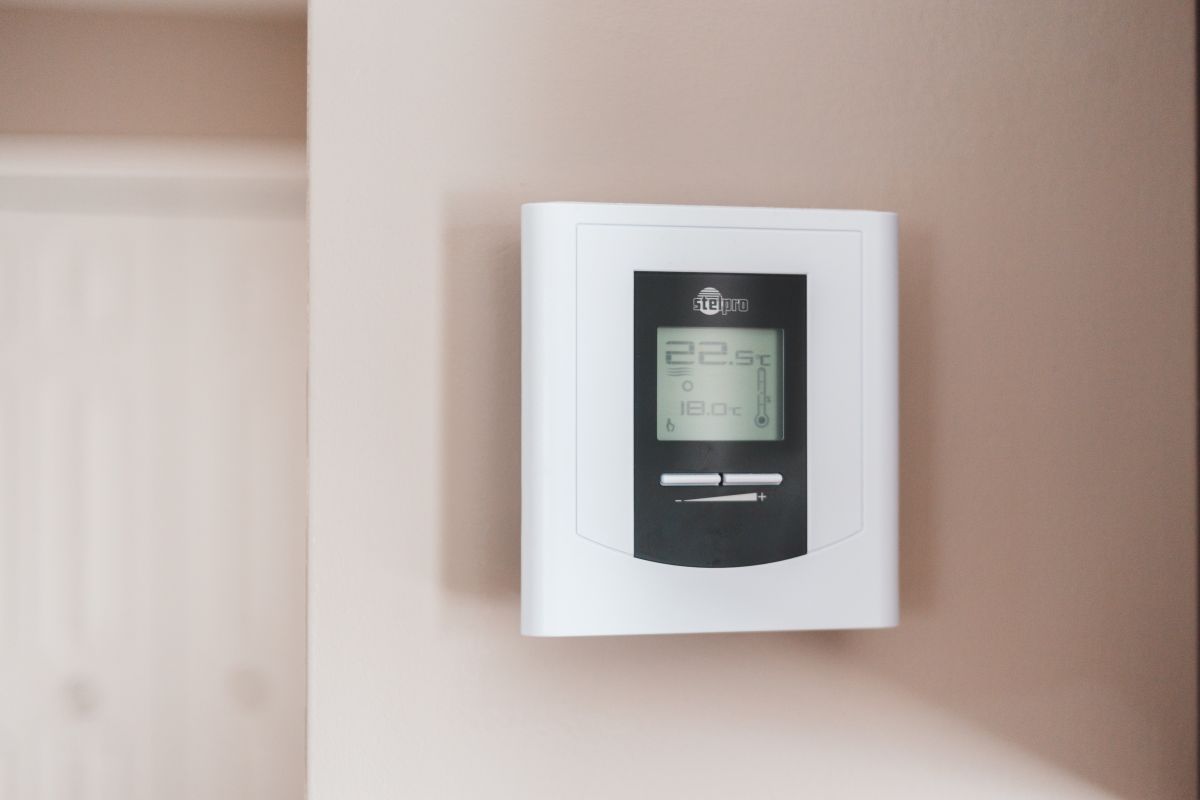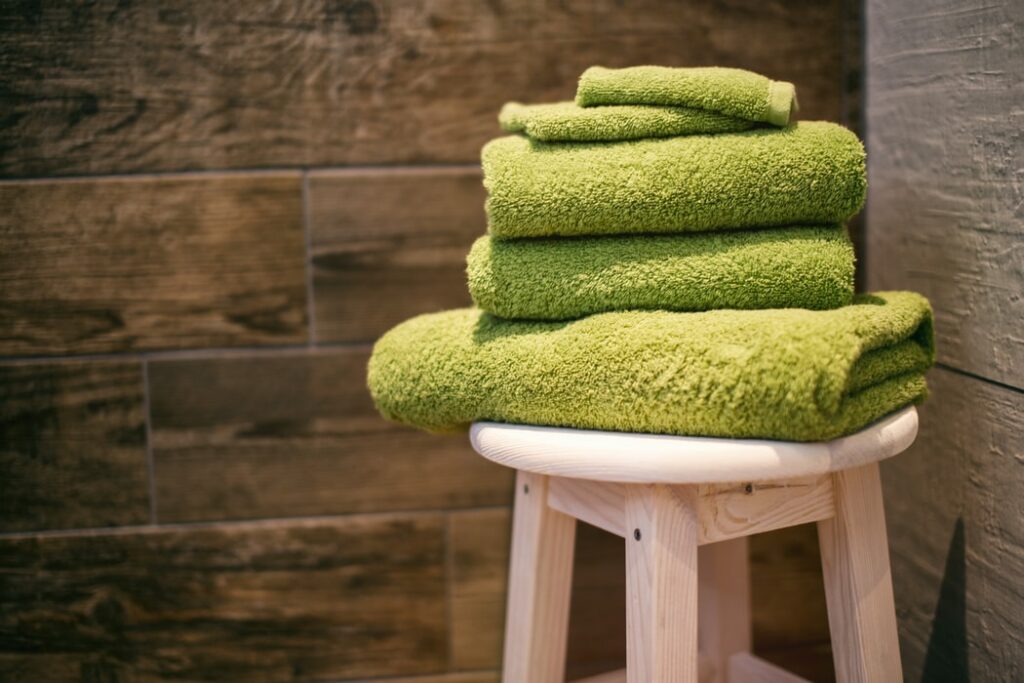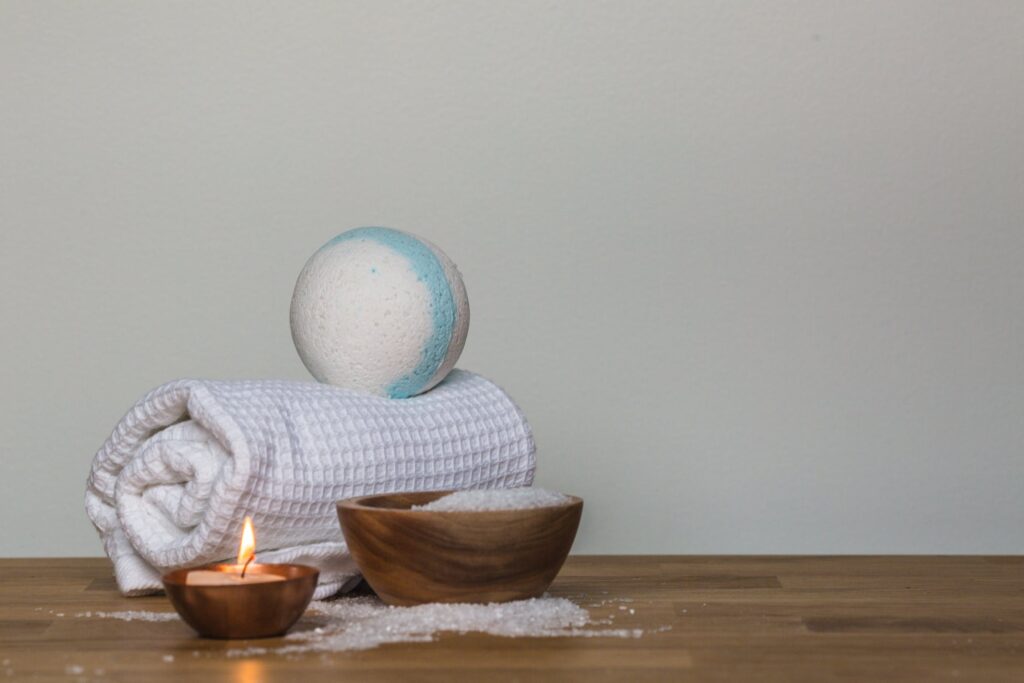Do you want to know how saunas influence blood flow? Knowing how each type affects your health is important whether you like stationary or portable saunas. Think of a world where you may unwind and, at the same time, get healthier. How similar or different are the circulatory and health benefits of these two sauna varieties?
Spas often feature traditional saunas as part of their stress relief and general wellness treatment plans. The heat widens your blood vessels, bringing more oxygenated blood to your skin and muscles. This action has a domino effect, increasing blood flow, relaxing muscles, and delivering more oxygen to cells. In contrast, portable saunas, which are small and can be kept in a home, provide a practical alternative for achieving the same goals. Their concentrated warmth penetrates your skin and causes you to sweat, which facilitates cleansing and improves blood flow.
But do professionals in the field agree with these outcomes? "Both traditional and portable saunas have shown promising results in enhancing blood circulation," says a well-respected expert on cardiovascular health. The vasodilation caused by the increased body temperature sets off a cascade of beneficial effects on the cardiovascular system. We'll take a closer look at saunas and circulation to see how these spas vary and to give professional opinions on the subject. Let's go on an adventure to learn how traditional and portable saunas differ in their ability to improve circulation and wellness.
The Medical Research Behind Blood Flow
A remarkable process that sustains life, blood circulation, lies at the heart of our complex biological system. The circulatory system, comprising the body's sophisticated network of vessels and highways, is crucial for carrying oxygen, nutrients, and other substances throughout the body.
The Circulatory Symphony
Your circulatory system's arteries, veins, and capillaries are the roadways, and your blood cells are the busy commuters. The city's beating heart is at its centre, ceaselessly supplying oxygenated blood to every part of the organism. This oxygen- and nutrient-rich blood travels through the arteries to supply the body's cells and tissues with the materials they need to perform their specific tasks.
Health Issues from Slow Flow
Disruptions of this circulating symphony can lead to health problems. A variety of pains and aches can be brought on by poor blood circulation, which can be brought on by causes such as constricted arteries, a sedentary lifestyle, or certain medical diseases. Reduced blood flow is the root cause of numbness, a feeling of coldness in the limbs, and painful muscle cramps. Think of these feelings as bottlenecks that prevent the free flow of goods and services in our thriving metropolis.
Vitality from Enhanced Flow
It is impossible to overestimate the significance of regular blood circulation maintenance. Just as a city's transportation network is crucial to its success, so is good blood flow to one's body. Increased oxygen and nutrient delivery from better blood flow supports cellular health and optimal bodily performance.
Take the Circulation Wheel
There are several ways to improve your blood flow and overall health. Regular physical activity is one of the best methods to maintain healthy blood vessels. Exercise strengthens the heart and promotes the development of collateral blood arteries, increasing the possible pathways for blood to take. Also, eating healthily and getting plenty of Omega-3 fatty acids might assist your arteries in staying supple and unblocked.
How To Get The Most Out Of Your Sauna Experience?
The frequent usage of a sauna has many known health benefits. You can take a few simple precautions to get the most out of your sauna time. If you follow these instructions carefully and repeatedly, your sauna experience will improve with time.
Shower Before and After Using Your Sauna
Some sauna goers find that taking a shower before entering the sauna causes them to sweat more heavily and quickly, providing a more stimulating and revitalising experience. Aside from eliminating dirt, lotions, and other residues that clog pores, a shower also helps promote blood flow throughout the body, helping you to perspire freely.

A sauna's revitalising, cleansing and energising effects motivate many people to shower soon afterwards. Don't use shower gel after your last sauna session. Instead, shower off, as your body is now thoroughly cleansed and revitalised, thanks to your time in the sauna.
Sauna Bathing Natural
Going garment-free is recommended to reap the health advantages of a sauna session fully. When you dress up, infrared heat has a harder time reaching your skin and body. Direct exposure of painful areas to infrared light waves has been shown to reduce inflammation in people with fibromyalgia, arthritis, and other pain problems.
Wearing clothing in a traditional sauna can prevent sweat from escaping the body. Sweat is produced by the body to cool the body down, but if it doesn't evaporate, the cooling process fails. The heat, sweat, and evaporation cycle must be maintained at all costs. To reap the full benefits of a sauna session, exposing as much skin as possible to the heat is best.
How Long Should You Stay in a Sauna?
Depending on your age, health, and personal heat tolerance, the optimal time spent in a sauna will feel different for each individual. Users often spend 10–15 minutes in the sauna before taking a break to cool down and then returning to the steam room for another 10-15 minutes. After a session in the sauna, some people like to take a quick cool-down dip in the pool or shower. The standard protocol calls for at least three cycles of sauna bathing followed by cooling off. However, this number can be increased or decreased as desired.
Regarding how often you should use a sauna, research suggests regular use is better. Some progress was seen with only 1-2 days per week. However, the full potential was realised with 3-4+ days per week.
Boost and Exfoliate Circulation
There are a few strategies to increase blood flow to the skin while in the sauna, maximising the therapeutic effects. While in the sauna, stimulate your skin by lightly brushing, scratching, or tapping your arms, legs, tummy, and back. Your pores will open wider, and your blood flow to the skin's surface will be increased if you do this while in the sauna.
Some sauna-goers like to drink something called a "vasta" or "vita" (the word varies by country) as they steam. It's slang for many new birch twigs used as a light cane. Strange as it may seem, the results will show in your skin's improved texture.
Hydrate to Maximise Health
Just as you should drink two to four glasses of cool water after a sauna session to rehydrate, you should avoid alcohol before and after a session for the same reason. Sauna use causes heavy perspiration. Therefore, drinking enough water afterwards is important to replenish your system. The average individual loses about a pint of sweat after a short sauna session.
However, the dry air evaporates so quickly that a person may not be aware of how much he is sweating. Sauna goers often consume tomato juice afterwards to replenish the potassium lost during the sauna session.
Stretch Out.
To maximise your sauna experience, lay back with your legs and arms extended rather than sitting up straight. Lying down allows the entire body to be exposed to the same temperature. This not only helps promote flexibility but also has the potential to speed up the process of reducing pain and stiffness. Make sure your sauna is equipped to handle your specific health concerns if you want to reap the full health benefits of sauna bathing.
Infrared Sauna Tip For Weight Loss
Infrared saunas, which use dry heat to make the body burn calories while it relaxes, have been shown in scientific tests to be particularly effective for weight loss. Infrared saunas, contrary to popular opinion, do more than only help you shed water weight. Research participants posted to the Clearlight Saunas website lost an average of 4% of their body fat over three months by utilising a Clearlight Sauna, and they maintained that loss over a four-month follow-up. Even though it may seem obvious, warming up with 15 minutes of light to moderate exercise before your workout is the most effective approach to boosting weight loss. This will increase your heart rate and make you sweat before you get in the water.
Safety: Enjoy Saunas Without Risking Your Health
The therapeutic and restorative effects of saunas have made them a cultural treasure for generations. Many people find that relaxing in a sauna helps them feel refreshed and renewed. Like any other form of self-care, using a sauna safely is paramount. In this piece, we'll go over some important safety measures you can take to make the most of saunas without putting your health at risk.
Precautions to Take When Using a Sauna
Monitor Temperature and Time
The intense heat in a sauna causes one to perspire heavily and speed up their heart rate. It is important to track how long you spend in the sauna and how hot it becomes to prevent overexertion and dehydration.

- Recommendation: Start with 10- to 15-minute sessions and work up to longer ones as your body adjusts. Ideal temperatures are between 65 and 88 degrees Celsius (150 and 190 Fahrenheit). If you feel faint, nauseous, or lightheaded, it's time to leave the sauna.
Hydration is Key
Staying hydrated is especially important when using a sauna because of the amount of sweat produced. Replace the fluids lost through sweat by drinking water before, during, and after your sauna session.
- Recommendation: Get at least one glass of water before hitting the sauna, and keep the fluids coming even after you get out.
Recognizing Potential Risks
Keep in Mind the Effects of Heat
Most people can safely use a sauna, but those who are easily overheated should take precautions. If you suffer from heat-related migraines or have trouble staying comfortable at high temperatures, a sauna session may not be for you.
- Recommendation: See a doctor before utilising a sauna if you have heat sensitivity. They are in the best position to advise you on whether regular sauna use benefits your health.
Pre-existing Medical Conditions
Sauna use may be dangerous for people with certain health issues. Saunas require caution for people with heart conditions, low blood pressure, or breathing difficulties. Extreme heat can increase the workload on the cardiovascular and respiratory systems.
- Recommendation: Incorporate saunas into your regimen only after consulting a doctor, especially if you have any pre-existing issues connected to the heart, lungs, or blood pressure.
Seeking Professional Guidance
Consult a Medical Professional
If you have any preexisting health conditions, you should talk to your doctor before including sauna sessions in your normal self-care practice. Based on your medical history and present state, they can provide you with specific recommendations.
- Recommendation: Consult your medical provider before beginning a regular sauna for stress relief and health benefits. They know the risks and benefits of sauna use and can advise you on how to protect your health in the sauna.
FAQs About Sauna
Traditional saunas, operating at high temperatures and low humidity, dilate blood vessels, increasing blood flow and delivering more oxygen and nutrients to body tissues, thus enhancing blood circulation.
Though saunas usually help circulation, excess use can lead to dehydration, counteracting benefits. Adequate hydration before, during, and after sessions is vital. Consult a doctor, especially if you have cardiovascular concerns.
Regular sauna sessions, 2-3 times a week, tend to provide sustained circulation benefits. Consistency matters, as cumulative effects of improved circulation contribute to overall health.
Post-sauna, blood flow remains enhanced due to improved blood vessel function. These effects might persist for several hours after a session, contributing to overall improved circulation.
Heat exposure induces the release of nitric oxide, a vasodilator that relaxes blood vessels. This relaxation improves blood flow, subsequently enhancing oxygen and nutrient delivery to tissues, positively affecting blood circulation.
Conclusion
Saunas play a crucial role in maintaining blood flow and overall health, with both traditional and portable saunas offering different benefits. Traditional saunas, which involve heating up blood vessels, widen blood vessels, and bring more oxygenated blood to the skin and muscles, increase blood flow, relax muscles, and deliver more oxygen to cells. In contrast, portable saunas, which are small and portable, provide a practical alternative for achieving the same goals.
The medical research behind blood flow is that it is the heart of our complex biological system, which is crucial for carrying oxygen, nutrients, and other substances throughout the body. The circulatory system's arteries, veins, and capillaries are the roadways, and blood cells are the busy commuters. The city's beating heart is at its center, supplying oxygenated blood to every part of the organism.
Health issues from slow blood flow can lead to health issues such as numbness, coldness in the limbs, and painful muscle cramps. Regular physical activity is essential for maintaining healthy blood vessels, as exercise strengthens the heart and promotes the development of collateral blood arteries. Eating healthily and getting plenty of Omega-3 fatty acids can also help maintain arteries supple and unblocked.
To get the most out of your sauna experience, follow these simple precautions carefully and repeatedly. Shower before and after using the sauna, as taking a shower before entering the sauna can promote blood flow throughout the body, helping you perspire freely. Wearing clothing in a traditional sauna can prevent sweat from escaping the body, which is essential for the cooling process.
The optimal time spent in a sauna will depend on your age, health, and personal heat tolerance. Users often spend 10-15 minutes in the sauna before taking a break to cool down and returning to the steam room for another 10-15 minutes. After a session, some people like to take a quick cool-down dip in the pool or shower. The standard protocol calls for at least three cycles of sauna bathing followed by cooling off, but this number can be increased or decreased as desired.
Research suggests that regular use of a sauna is better, with some progress seen with 1-2 days per week, but the full potential is realized with 3-4+ days per week. By following these simple precautions, you can enjoy a more enjoyable and beneficial sauna experience.
Saunas are a popular form of self-care that offer therapeutic benefits and can be a great way to relax and rejuvenate. To maximize the therapeutic effects of saunas, it is essential to follow certain safety measures.
Content Summary:
- Do you want to know how saunas influence blood flow?
- Knowing how each type affects your health is important whether you like stationary or portable saunas.
- How similar or different are the circulatory and health benefits of these two sauna varieties?Spas often feature traditional saunas as part of their stress relief and general wellness treatment plans.
- In contrast, portable saunas, which are small and can be kept in a home, provide a practical alternative for achieving the same goals.
- Their concentrated warmth penetrates your skin and causes you to sweat, which facilitates cleansing and improves blood flow.
- Both traditional and portable saunas have shown promising results in enhancing blood circulation," says a well-respected expert on cardiovascular health.
- We'll take a closer look at saunas and circulation to see how these spas vary and to give professional opinions on the subject.
- Let's go on an adventure to learn how traditional and portable saunas differ in their ability to improve circulation and wellness.
- Disruptions of this circulating symphony can lead to health problems.
- A variety of pains and aches can be brought on by poor blood circulation, which can be brought on by causes such as constricted arteries, a sedentary lifestyle, or certain medical diseases.
- It is impossible to overestimate the significance of regular blood circulation maintenance.
- There are several ways to improve your blood flow and overall health.
- Regular physical activity is one of the best methods to maintain healthy blood vessels.
- The frequent usage of a sauna has many known health benefits.
- Don't use shower gel after your last sauna session.
- Instead, shower off, as your body is now thoroughly cleansed and revitalised, thanks to your time in the sauna.
- To reap the full benefits of a sauna session, exposing as much skin as possible to the heat is best.
- There are a few strategies to increase blood flow to the skin while in the sauna, maximising the therapeutic effects.
- While in the sauna, stimulate your skin by lightly brushing, scratching, or tapping your arms, legs, tummy, and back.
- Just as you should drink two to four glasses of cool water after a sauna session to rehydrate, you should avoid alcohol before and after a session for the same reason.
- Therefore, drinking enough water afterwards is important to replenish your system.
- To maximise your sauna experience, lay back with your legs and arms extended rather than sitting up straight.
- Make sure your sauna is equipped to handle your specific health concerns if you want to reap the full health benefits of sauna bathing.
- Infrared saunas, which use dry heat to make the body burn calories while it relaxes, have been shown in scientific tests to be particularly effective for weight loss.
- Infrared saunas, contrary to popular opinion, do more than only help you shed water weight.
- Even though it may seem obvious, warming up with 15 minutes of light to moderate exercise before your workout is the most effective approach to boosting weight loss.
- This will increase your heart rate and make you sweat before you get in the water.
- Many people find that relaxing in a sauna helps them feel refreshed and renewed.
- Like any other form of self-care, using a sauna safely is paramount.
- In this piece, we'll go over some important safety measures you can take to make the most of saunas without putting your health at risk.
- The intense heat in a sauna causes one to perspire heavily and speed up their heart rate.
- It is important to track how long you spend in the sauna and how hot it becomes to prevent overexertion and dehydration.
- Replace the fluids lost through sweat by drinking water before, during, and after your sauna session.
- Recommendation: See a doctor before utilising a sauna if you have heat sensitivity.
- Recommendation: Incorporate saunas into your regimen only after consulting a doctor, especially if you have any pre-existing issues connected to the heart, lungs, or blood pressure.
- Recommendation: Consult your medical provider before beginning a regular sauna for stress relief and health benefits.
- They know the risks and benefits of sauna use and can advise you on how to protect your health in the sauna.






